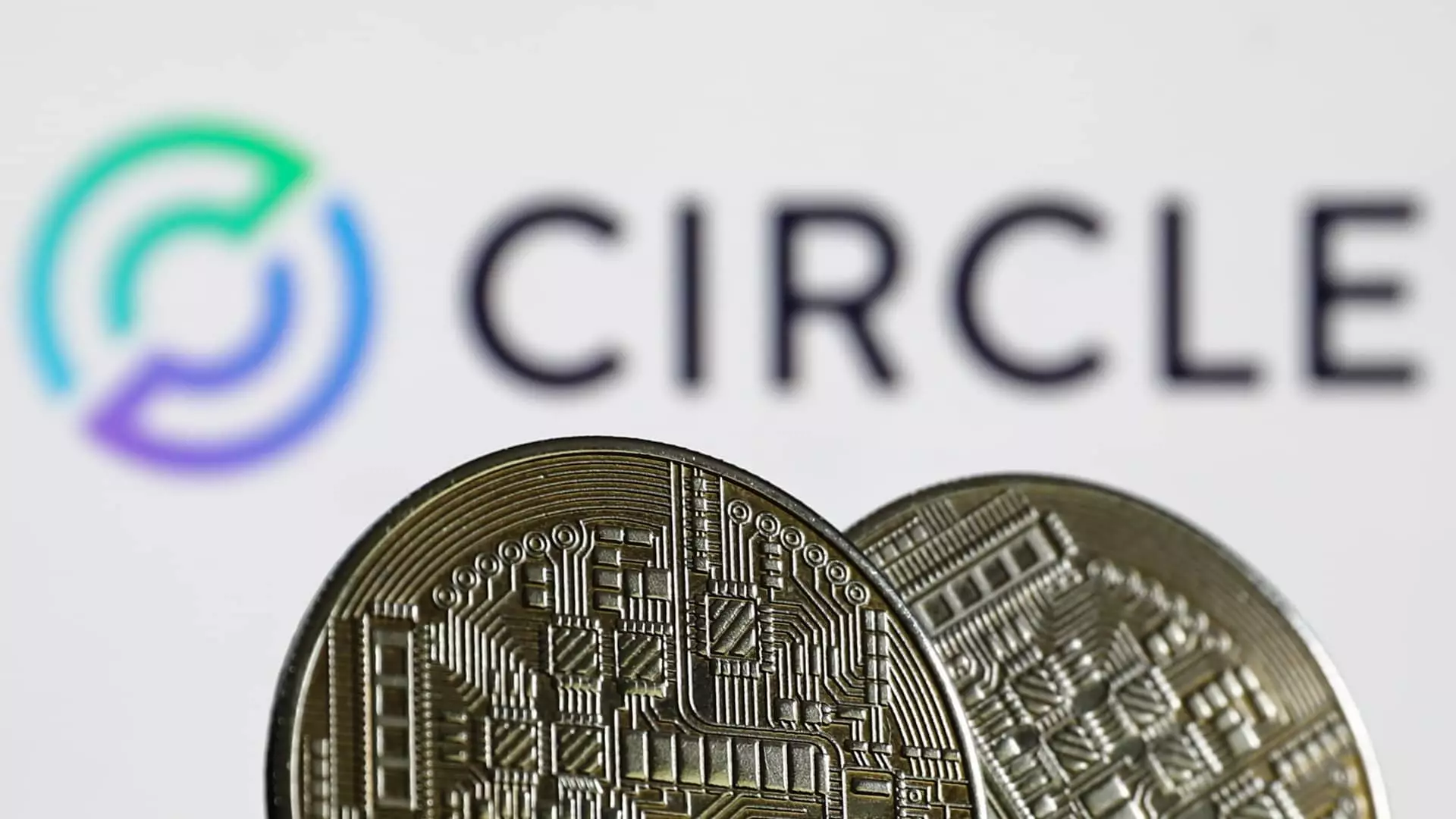Circle, the brain behind the robust USDC stablecoin, is diving into the stock market frenzy with its impending initial public offering (IPO). They aim to rake in approximately $624 million at a dizzying valuation of around $6 billion. But let’s cut through the euphoric headlines and numbers for a moment. This overzealous valuation raises critical questions about the sustainability of Circle’s business model in an ever-shifting crypto landscape. Is this confidence warranted, or is it merely a byproduct of a speculative bubble?
The outline suggests Circle will float 24 million shares of Class A common stock, part of which will come from existing shareholders. The pricing range of $24 to $26 apiece tantalizes investors, but fear remains just beneath the surface. Circle prides itself on a valuation that sits comfortably in the realm of multibillion-dollar startups, bolstered by a fervent trading community rallying behind cryptocurrencies. However, as history has demonstrated, the cryptocurrency space is notorious for rapid highs and devastating lows. Investors should be cautious before jumping on the bandwagon simply because the price appears favorable.
The Apparent Boom in Stablecoins
Circle’s USDC stablecoin, currently boasting about $62 billion in circulation, claims a significant piece of the stablecoin pie. Nevertheless, its claim of a 27% market presence still pales in comparison to Tether’s monopolistic grip at 67%. While USDC’s market cap has seen a robust growth of 40% this year, Tether’s more modest 10% increase raises questions about whether USDC can truly sidestep the avalanche of scrutiny and competition that plagues the stablecoin world.
The cryptocurrency market stands at the edge of a monumental breakthrough, with legislation concerning stablecoins reportedly on the horizon. Recent developments indicate that the Senate is advancing the first-ever regulatory framework for cryptocurrencies. Yet the question of whether recent legislative momentum can genuinely stabilize a tumultuous market remains. Could Circle’s accomplishments simply reflect a trend rather than an enduring shift? Or is it an example of fleeting fortune masquerading as stability?
Potential Conflicts with Partners and Competitors
Circle’s IPO carries lasting implications for one of its chief partners—Coinbase. As a co-creator of USDC and instrumental in driving its distribution, Coinbase’s business model intertwines tightly with Circle’s. With a staggering 50% revenue-sharing agreement in place, Coinbase’s fortunes will likely rise and fall with the health of USDC. This symbiotic relationship could just as easily morph into a double-edged sword, leaving investors in murky waters.
In this volatile ecosystem, Coinbase’s CEO has openly set lofty targets for positioning USDC as the leading stablecoin globally. However, is shooting for the moon a realistic strategy, especially against Tether’s industry leadership? Aiming for prominence may lead to aggressive tactics that not only strain resources but also compromise the foundational principles of crypto innovation. The path to dominance may be littered with ethical concerns and competitive isolation tactics that could tarnish Coinbase’s reputation.
Shifting Landscapes and Emerging Applications
Historically, stablecoins have thrived as tools for trading and collateral in decentralized finance (DeFi) operations. Investors carefully scrutinize their liquidity and market presence, seeking stability in wavering conditions. But USDC’s recent traction among banks and fintech companies illustrates a burgeoning trend that could redefine its role in the financial ecosystem. These institutions are now keenly interested in the speed and cost-effectiveness of transferring dollars across borders.
Moreover, the notion that stablecoins reinforce U.S. dollar supremacy by ensuring international dollar utility is growing more prominent. As conversations about dollar-denominated stablecoins gain traction, the reflective light of scrutiny falls upon their governance and underlying assets. Are we paving the way for a trusted ecosystem, or could the very foundation underpinning these stablecoins become the catalyst for their downfall?
The excitement surrounding Circle’s IPO can’t be dismissed as trivial, yet the undercurrents of skepticism loom heavy. Amidst rising valuations and optimistic outlooks, the looming challenges of regulatory frameworks, competitive rivalries, and ethical roadblocks persist. As we plunge deeper into this evolving terrain, one fundamental question prevails: Is Circle too ambitious, or has it crafted the blueprints for a sustainable financial revolution? This remains a conundrum awaiting resolution in the volatile yet thrilling world of cryptocurrencies.

